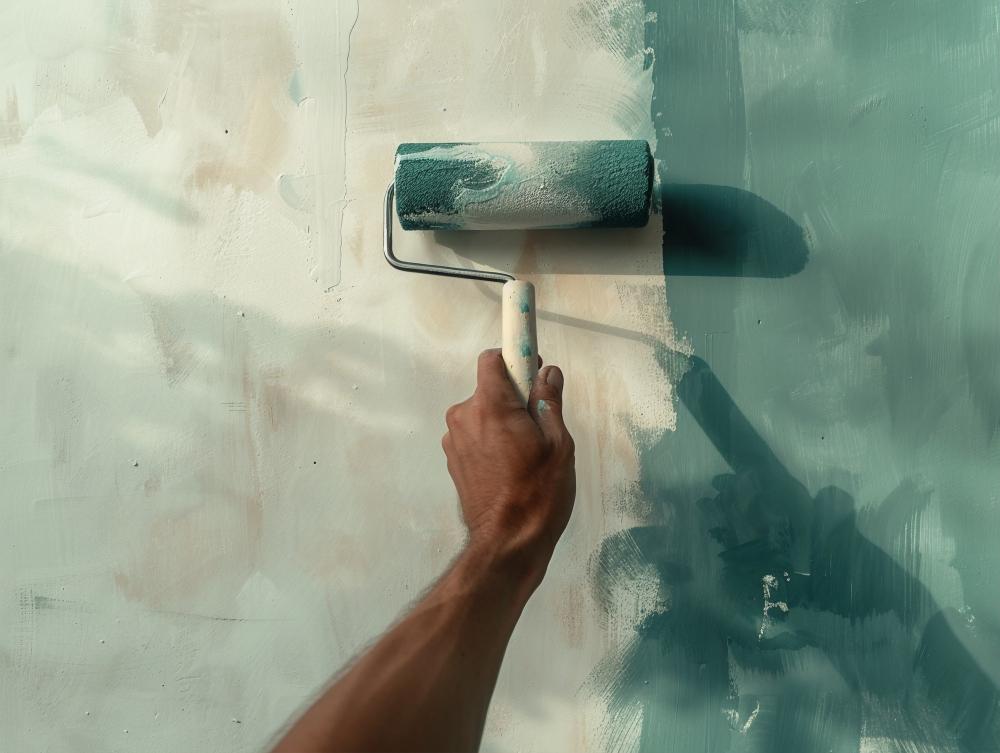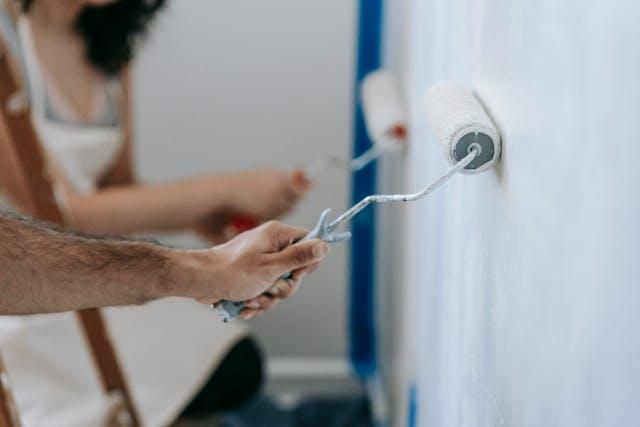“We’ll just do one coat and it will be fine.” It sounds easy—until stains appear, rollers “paint” streaks, and the corners turn gray. Poorly executed painting services are not just about aesthetics—they cost time, money, and nerves: re-sanding, new materials, and sometimes even patching plaster. Below, you will see what the hidden costs are, how to avoid them, and how to order work that looks great and lasts a long time.

What "bad" painting looks like
• Stripes and streaks from the roller – improper pressure, thin or dried paint.
• Differences in shade – dilution "by eye," mixed batches, uneven hands.
• Peeling/bubbles – poor preparation: dust, greasy film, old plasters, or latex without primer.
• Shadows in corners and around contacts – gaps in preparation and technique.
• Stains from leakage – especially on ceilings and above windows, where thickness control is required.
💡 Important: A polished paint job starts before the brush — with surface preparation, corrections to the plaster, and the right primer for the specific type of wall.
The true cost: hidden expenses that are not included in the "cheap" offer
• Re-sanding + new coats of paint — you pay for labor and materials a second time.
• Foundation repair — poor latex "removes" the old paint, revealing defects in the plaster; sometimes local installation of drywall is necessary for an ideal plane.
• Damaged flooring/furniture — without covering with plastic/paper, stains remain.
• Lost time — unplanned drying and correction days.
• Short lifespan of the coating — you will need to repaint after months, not years.
Useful reading: Designer vs. Foreman: When to listen to aesthetics, and when to listen to reality.

Preparation is 70% of the result
1. Inspection and diagnosis — checking for moisture, joints, cracks, irregularities.
2. Puttying and corrections to plastering — to make the quality of the paint "shine."
3. Primer — connects the surface and equalizes absorbency.
4. Test sample — a small section for checking shade/coverage.
5. Covering and protection — floor, baseboards, furniture; the clean finish is part of the service.
✅ Client checklist: photos of issues, brief description of the rooms and expected finish (matte/satin), whether there is a kitchen/moisture, and the timelines for using the rooms.
How to read and compare offers fairly
The good offer describes the scope, number of coats, brand/type of paint, primer, corrections to plaster, protections, duration, and warranty. If you only see "XX lv./sq.m", key activities are likely missing. Compare the offers based on the same brief — this way, the difference is real, not "apples to oranges".
More: 10 important questions to ask the contractor before starting the project.
Common mistakes that make painting expensive
• Dilution by feel — different wall tones.
• Skipping the primer — especially with new plasters and putties.
• Poor organization of the hands — wet on dry → stripes.
• Insufficient protection — stains on frames/contacts/floor.
• Rushing without drying — cracking and "orange peel".
When does it make sense to use drywall
In the case of severely warped surfaces, "waves," or compromised old foundations, local installation of drywall provides a better plane than endless plastering. Yes, it costs a little more now — but it saves future layers, materials, and labor, and the finish becomes "like new construction."

How to order correctly
1. Describe the rooms (sq.m, heights, features) and issues (moisture, stains, cracks).
2. Send 6–10 photos/short video — ceilings, corners, around windows/outlets.
3. Demand specifics — hands, primer, brands, corrections on plasters, protection, and cleaning.
4. Plan for temporary removal/protection of furniture and drying time.
5. Checklist Review — embrace working with natural light, observe corners and transitions.
More useful: How to choose a reliable craftsman: Practical guide — criteria for experience, communication, and warranty.

Conclusion:
Bad painting is not just "we'll get used to it" — it eats away at the budget through corrections and rapid aging. With proper preparation of the plaster, accurate primer, and correct execution, the walls look excellent for years. Order painting services with a clear description, compare personalized offers, and work with verified specialists — the difference is visible every day.